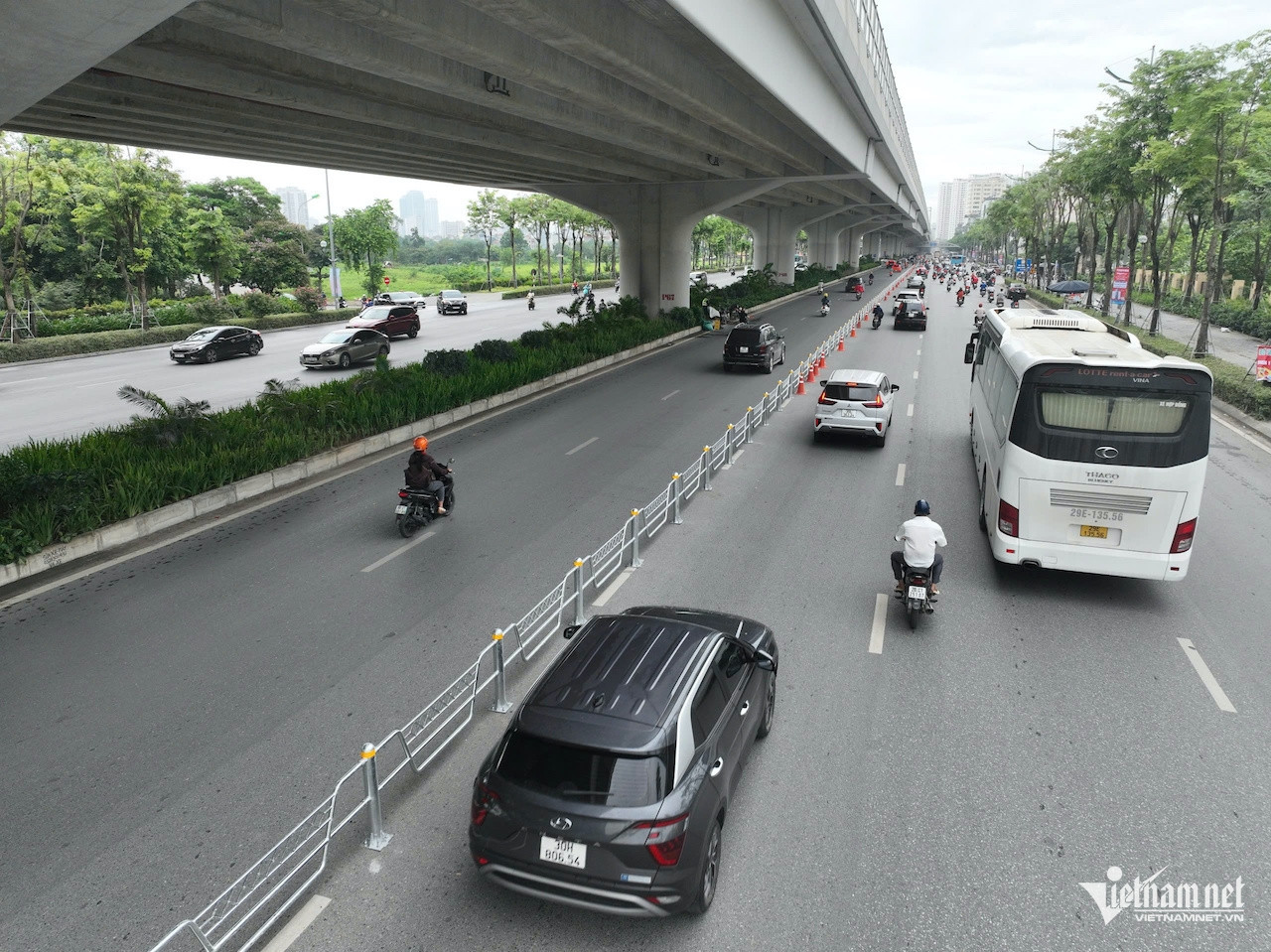
Hanoi is currently installing hard dividers on Vo Chi Cong and Pham Van Dong roads to separate lanes for cars and motorbikes. The dividers will be officially put into operation from July 1.
The Hanoi’s Department of Construction affirmed that separating vehicle lanes will enhance order, flow, and safety in traffic, reducing congestion and accidents. It will also help road users easily identify their lanes, travel correctly, and avoid jostling during peak hours.
However, people’s opinions vary about the move. Many argue that the dividers will not be effective. Hard lane dividers were once installed on Nguyen Trai Road, but later were removed.
Over the past week, during peak hours, the car lanes on these two roads have been heavily congested, and incidents have occurred with road users crashing into the hard dividers.
Meanwhile, Minh praised Hanoi’s initiative to install hard dividers to separate car and motorbike lanes on these two roads.
“In terms of traffic organization techniques, this is a necessary thing to do. Separating lanes will certainly improve safety, especially in the current context when cars are mixed with motorbikes and other rudimentary vehicles on these two routes.
“I travel on these roads regularly and I noticed that though the roads are wide, some motorbikes still enter highly dangerous lanes close to the dividers where cars travel at high speed. In case of collision, regardless of who is at fault, the consequences for motorbike riders are severe,” he said.
“Some cars drive recklessly, encroaching on the rightmost lanes reserved for motorbikes. This significantly increases the risk of collisions between cars and motorbikes,” Minh noted.
Minh believes that in a mixed traffic model, maximally separating vulnerable road users (motorbikes, bicycles) from high-speed car traffic is essential, and this is what Hanoi is striving for.
“For a road with five lanes, reserving three for cars and two for two-wheeled vehicles is reasonable. If traffic organization includes speed management, arrangement of waiting areas, and close coordination with traffic signals, this could become an optimal model for other major roads in Hanoi,” he said.
Of course, some problems may arise in the first phase of implementation. There are many access points on the roads, and the local economy relies heavily on commercial activities and business along both sides. This creates significant demand for travel, turning, and stopping by various vehicles, including cars, motorbikes, bicycles, and pedestrians.
“If cars were allowed to use all five lanes (including the two motorbike lanes), we would need to manage and control cars’ speed in mixed traffic flow with motorbikes. International recommendations and experience show that speeds should be uniform and not exceed 50 km/h.
Overall, lane separation is a better approach. However, given the specific traffic characteristics I mentioned, some road users may benefit more, while others may face minor inconveniences. That’s perfectly normal,” Minh said.
Cautious steps proposed
Minh suggested that road management agencies conduct studies and propose specific solutions. For instance, if claims arise that the hard dividers cause congestion, there should be a comparative evaluation of conditions before and after implementation.
Congestion assessments should be based on specific metrics, such as travel time along the route or waiting time at intersections.
“This is the most convincing evidence to present to the public, rather than vague claims about whether conditions are more congested or smoother after implementation. In reality, car lanes may be slightly more congested, but motorbike lanes could be smoother.
“In particular, management agencies must define clear overall metrics to evaluate the plan implementation. If public safety is the top priority, they should provide data on how many traffic accidents the plan is expected to reduce. Globally, there are established methods and processes for this. Hanoi could refer to and test them in this case.”
“The conditions of the roads are similar to Vo Van Kiet Boulevard in HCM City. That boulevard is well-organized by HCM City, from speed management and lane separation to intersection design. Hanoi should consider this model,” Minh said.
Current debates on the outcomes of the move are, in Minh’s view, largely subjective. Without specific data to back them up, these opinions lead to endless arguments.
Regarding accidents involving collisions with the dividers, Minh suggested that Hanoi study the addition of reflective paint or clear reflective markers on the dividers. Additionally, moderate speed bumps could be placed before lanes to warn road users.
N. Huyen